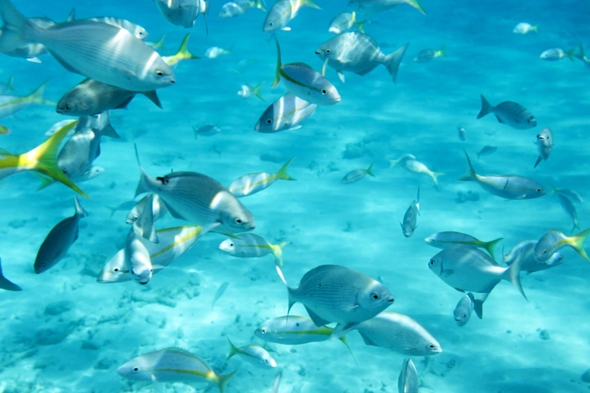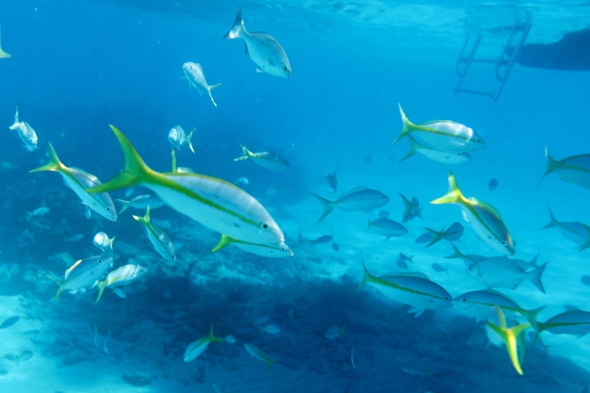
25 Feb Snorkeling at Alligator Reef in the Florida Keys
The only living coral barrier reef in the United States, also happens to be one of the largest reef systems in the world. Where is this reef located you may ask? Well, it is located in the Florida Keys, and we are lucky enough to live a short drive away. The Florida Reef’s northern end lies in Biscayne Key at Biscayne National Park and it spans all the way down the Atlantic side of the Florida Keys; it stretches approximately 220 miles along the coast. Apparently, the most fascinating part of the reef rests off of Key Largo near John Pennekamp State Park, but we still have yet to visit this part of the reef.
On a recent day trip to the Keys, we decided to take a last minute snorkeling trip with my sister-in-law and her friend who were spending the weekend with us. They went parasailing through Key Largo Parasail and were offered a $10 off coupon for snorkeling with their partner company Islamorada Boat Tours, making the snorkeling trip just $25. Since they had never been snorkeling, we couldn’t pass up the opportunity, and 1.5 hours later, we were on the boat waiting to depart!


Micah and I have been snorkeling many times in the Keys and other places such as Hawaii and Curacao; most of our Keys snorkeling experiences have been slightly lackluster, but thankfully, I have to say this trip changed my views on snorkeling in Florida. It’s not that our previous trips were bad, they just didn’t quite live up to our expectations. Perhaps it was due to bad timing with water clarity and locations, but this time, our snorkeling was the best experience by far and it really makes me want to plan a day snorkeling around the reef near John Pennekamp State Park!
Our tour started at 1:30 in the afternoon and upon boarding the boat, we were greeted by the friendly captain and mate. The captain was not the regular guide, but he really made the tour and boat ride enjoyable with his upbeat and energetic personality. After a short boat ride, we stopped at the first reef, Cheeca Rocks. The captain told us that the visibility wasn’t that great, only around 20 ft., and that we would probably have much better luck at the reef a bit farther out, Alligator Reef, as they had 100 ft. visibility the day prior. Collectively, the group decided to go the extra distance, and we were all so glad we did! The area was much less crowded and the visibility and marine life were great.


Right off the side of the boat, there were swarms of yellow tail snapper, and at the nearby reef, we spotted parrotfish, great barracuda, blue tang and many others that I couldn’t identify. Unfortunately, Micah was having a few issues with sunscreen in his eyes, a bout of seasickness, and a nearly full memory card on his camera, so most of the photographs of the actual reef were snapped with my iPhone camera and not nearly as exciting, clear or colorful as they should have been! Oh well, it happens I guess–at least we got some fun photos of the yellow tail snapper!











Alligator Reef is located about 4 nautical miles from Indian Key, and the reef is home to a lighthouse appropriately named Alligator Reef Lighthouse. The lighthouse stands 136 ft. tall and was named to honor the Navy schooner, Alligator, that ran aground here in the early 1800’s. The schooner was a part of the Anti-Piracy Squadron that helped keep pirates away from the Florida shores. After multiple ships were destroyed from running aground, a lighthouse was built to warn sailors of the reef. The reef is one of the largest in the Upper Keys and home to over 500 different marine life species. Depths near the reef span from 8 ft. to 40 ft., and with its many crevices, it makes for a great dive site as well.

After an hour or so of exploring, we returned to the boat for our 30 minute ride back to shore. Snorkeling with beautiful marine life turned out to be a great adventure, and we would recommend you not miss this experience when spending time in Key Largo!
Do you like to snorkel? Where is your favorite snorkeling spot?

